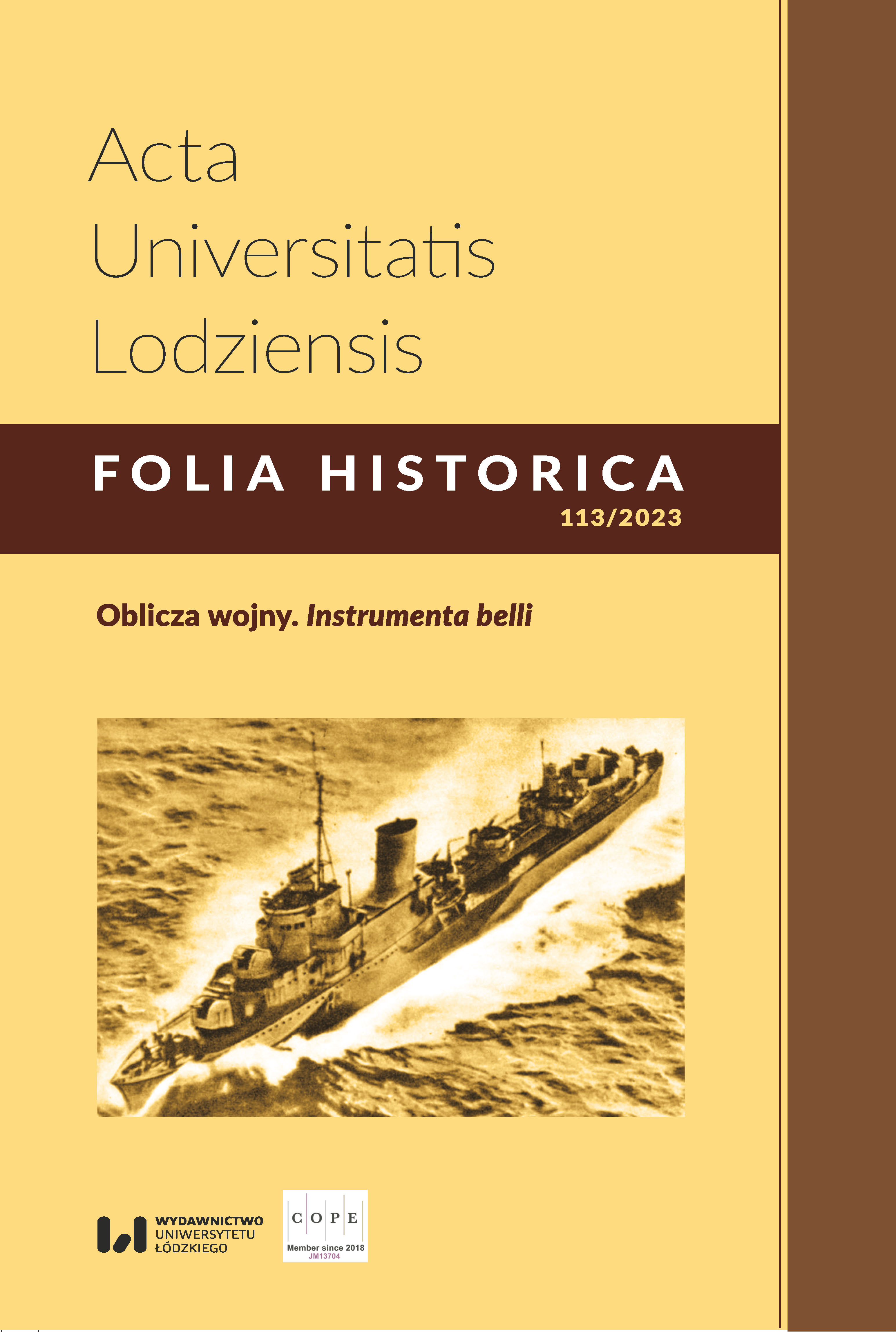Zakaz używania łuku i kuszy w średniowiecznej myśli Kościoła katolickiego o wojnie
Prohibition of the Use of a Bow and Crossbow in the Medieval Thought of the Catholic Church about the War
Author(s): Daniel MarekSubject(s): History, Military history, Ancient World, Middle Ages
Published by: Wydawnictwo Uniwersytetu Łódzkiego
Keywords: bow; crossbow; just war; war; Second Lateran Council
Summary/Abstract: Ranged weapons have been accompanying people since ancient times. The bow and cross-bow have been used by almost all civilizations on every continent. The high efficiency of this projectile weapon is visible in giving it almost supernatural properties, which can be found, for example, in the Bible. Initially, the Church did not refer directly to the actions of archers and crossbowmen, but was rather mostly concerned with the issue of war in general. It was not until the end of the 11th century that Church restrictions on the use of the crossbow began. During the Second Lateran Council in 1139, canon 29 prohibited the use of both a bow and a crossbow in combat between Christians. However, following the development of throwable weapons, it seems that this did not have a major impact on the medieval military. The question then arises as to the sense of introducing a prohibition by calling an ecumenical council and then placing it in the universal ecclesiastical legislation. In order to understand the issue of sanctions, one has to look at the council’s decision through the prism of the medieval thought of canonists and lawyers. Canon 29 was commented on in the context of another important issue, which was “just war”. According to theologians and lawyers, the ban on the use of bows and crossbows did not apply to “just war”, which was a concept adopted from Roman thought and developed over the centuries by Christian intellectuals. The most important reason for the ban is therefore to limit the war itself. From the beginning of its existence, the Church was concerned with the justification for waging war. As long as the Roman Empire was ruled by pagan rulers, war appeared in Chris-tian thought as something unnecessary, even forbidden. With the advent of Constantine the Great and the Christianization of the Roman Empire, the Christian approach to war changed. The fall of the Empire in the West and the influx of Germanic peoples caused a new approach to the soldier profession to appear. The lack of a strong central authority forced the Church hierarchy to search for a new ally in ensuring peace in the world. Peace initiatives against knights and mighty looting and robbery were to reduce the scale of violence in early medieval Europe. Peace and with time God’s truce, together with the leagues of peace, forcibly began to bring peace and protect the peasants, clergy and merchants, who were most exposed to unlimited war. War was declared. However, the Christianization of the knighthood led to the militarization of the Church itself. Initially, the forbidden profession of a soldier made it possible to obtain salvation without changing the way of life. In this context, the type of weapon and the way of warfare ceased to matter, as long as the fight met the conditions of the “just war”.
Journal: Acta Universitatis Lodziensis. Folia Historica
- Issue Year: 2023
- Issue No: 113
- Page Range: 27-46
- Page Count: 20
- Language: Polish

